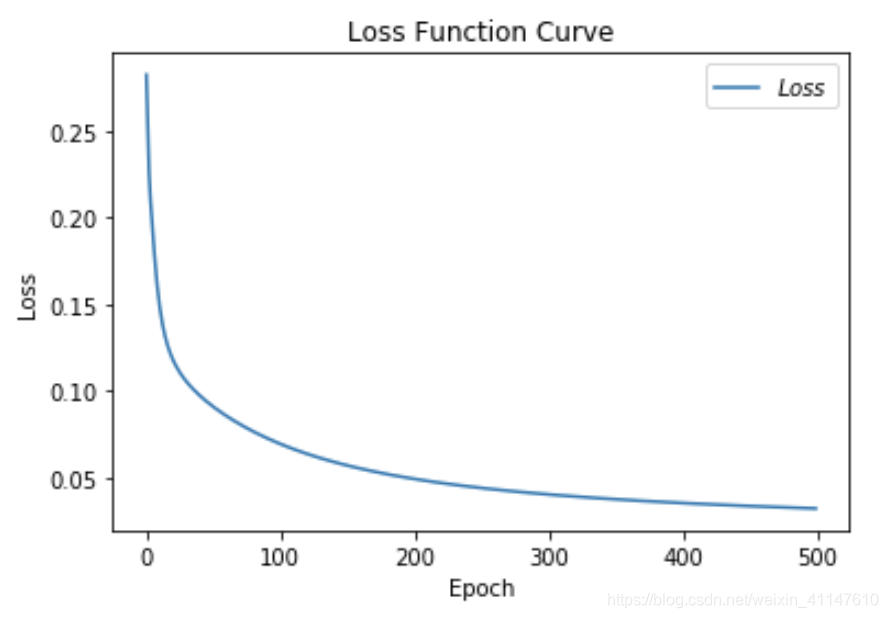本章内容参考mooc北京大学课程,tensorflow笔记
tf.cast()
- 强制tensor转换为该数据类型
tf.cast(张量名,dtype=数据类型)
tf.reduce_min()
- 计算张量维度上元素的最小值
tf.reduce_min(张量名)
tf.reduce_max()
- 计算张量维度上元素的最大值
tf.reduce_max(张量名)
举例
x1 = tf.constant([1., 2., 3. ],dtype=tf.float32)
print(x1)
# tf.Tensor([1. 2. 3.], shape=(3,), dtype=float32)
x2 = tf.cast(x1, tf.int32)
print(x2)
# tf.Tensor([1 2 3], shape=(3,), dtype=int32)
print(tf.reduce_min(x2),tf.reduce_max(x2))
# tf.Tensor(1, shape=(), dtype=int32) tf.Tensor(3, shape=(), dtype=int32)
axis
在二维张量或数组中,axis=0表示沿第0个方向操作,axis=1表示沿第1个方向操作。在二维张量或数组中,第0个方向是行方向,第1个方向是列方向。
- 沿行方向操作,是指每次操作行下标+1,也就是对一列进行操作
- 沿列方向操作就是对一行进行操作
- 若axis未指定,则对所有数据进行操作。
tf.reduce_mean()
- 计算沿着指定维度的平均值
tf.reduce_mean(张量名, axis=操作轴)
tf.reduce_sum()
- 计算张量沿着指定维度的和
tf.reduce_sum(张量名, axis=操作轴)
举例
x = tf.constant([[1.,2.,3.],
[1.,2.,10.]])
print(tf.reduce_mean(x))
# tf.Tensor(3.1666667, shape=(), dtype=float32)
print(tf.reduce_mean(x,axis=1))
# tf.Tensor(3.1666667, shape=(), dtype=float32)
tf.Variable()
- 很重要!!!
- tf.Variable()将变量标记为可训练,如果需要用到梯度下降,一定要使用此函数。
- 被标记的变量会在方向传播中记录梯度信息。
- 神经网络训练中,常用该函数标记带训练参数。
tf.Variable(初始值)
比如:
w = tf.Variable(tf.random.normal([2,2], mean=0,stddev=1))
# 标记一正态分布张量
矩阵乘tf.matmul()
- 实现两个矩阵相乘
a = tf.ones([3,2])
b = tf.fill([2,3], 3.)
print(tf.matmul(b,a))
print(tf.matmul(a,b))
tf.Tensor(
[[9. 9.]
[9. 9.]], shape=(2, 2), dtype=float32)
tf.Tensor(
[[6. 6. 6.]
[6. 6. 6.]
[6. 6. 6.]], shape=(3, 3), dtype=float32)
tf.data.Dataset.from_tensor_slices()
- 将输入特征和标签进行匹配,构建数据集。
data = tf.data.Dataset.from_tensor_slices((输入特征, 标签))
features = tf.constant([12, 23, 10, 17])
labels = tf.constant([0, 1, 1, 0])
dataset = tf.data.Dataset.from_tensor_slices((features, labels))
print(dataset)
for element in dataset:
print(element)
<TensorSliceDataset shapes: ((), ()), types: (tf.int32, tf.int32)>
(<tf.Tensor: shape=(), dtype=int32, numpy=12>, <tf.Tensor: shape=(), dtype=int32, numpy=0>)
(<tf.Tensor: shape=(), dtype=int32, numpy=23>, <tf.Tensor: shape=(), dtype=int32, numpy=1>)
(<tf.Tensor: shape=(), dtype=int32, numpy=10>, <tf.Tensor: shape=(), dtype=int32, numpy=1>)
(<tf.Tensor: shape=(), dtype=int32, numpy=17>, <tf.Tensor: shape=(), dtype=int32, numpy=0>)
tf.GradientTape()
- 使用with结构记录计算过程,使用gradient求出张量的梯度
with tf.GradientTape() as tape:
若干个计算过程
grad = tape.gradient(函数,对谁求导
with tf.GradientTape() as tape:
w = tf.Variable(tf.constant(3.0))
loss = tf.pow(w, 2)
grad = tape.gradient(loss, w)
print(grad)
tf.Tensor(6.0, shape=(), dtype=float32)
tf.one_hot()
- 将数据转换为ont_hot矩阵
tf.one_hot(待转换数据, depth=基分类)
- 也可以指定axis
labels = tf.constant([1,0,2])
# 标签为1,0,2
output = tf.one_hot(labels, depth=3)
# 需要注意,这里为三分类,默认标签号只能为0~2,若超过2,则编码为全0
print(output)
output = tf.one_hot(labels, depth=4)
print(output)
tf.Tensor(
[[0. 1. 0.]
[1. 0. 0.]
[0. 0. 1.]], shape=(3, 3), dtype=float32)
tf.Tensor(
[[0. 1. 0. 0.]
[1. 0. 0. 0.]
[0. 0. 1. 0.]], shape=(3, 4), dtype=float32)
综合应用-鸢尾花分类
- 使用sklearn中的鸢尾花数据集
1.准备数据
# 导入所需模块
import tensorflow as tf
from sklearn import datasets
from matplotlib import pyplot as plt
import numpy as np
# 读入数据
x_data = load_iris().data
y_data = load_iris().target
print(x_data.shape)
# (150, 4)
print(y_data.shape)
# (150,)
# 数据集乱序
# seed: 随机数种子,是一个整数,当设置之后,每次生成的随机数都一样(为方便教学,以保每位同学结果一致)
np.random.seed(116) # 使用相同的seed,保证输入特征和标签一一对应
np.random.shuffle(x_data)
np.random.seed(116)
np.random.shuffle(y_data)
tf.random.set_seed(116)
# 将打乱后的数据集分割为训练集和测试集,训练集为前120行,测试集为后30行
x_train = x_data[:-30]
y_train = y_data[:-30]
x_test = x_data[-30:]
y_test = y_data[-30:]
# 转换x的数据类型,否则后面矩阵相乘时会因数据类型不一致报错
x_train = tf.cast(x_train, tf.float32)
x_test = tf.cast(x_test, tf.float32)
# from_tensor_slices函数使输入特征和标签值一一对应。(把数据集分批次,每个批次batch组数据)
train_db = tf.data.Dataset.from_tensor_slices((x_train, y_train)).batch(32)
test_db = tf.data.Dataset.from_tensor_slices((x_test, y_test)).batch(32)
2.搭建网络
主要定义神经网络中所有可训练参数。
# 生成神经网络的参数,4个输入特征故,输入层为4个输入节点;因为3分类,故输出层为3个神经元
# 用tf.Variable()标记参数可训练
# 使用seed使每次生成的随机数相同(方便教学,使大家结果都一致,在现实使用时不写seed)
w1 = tf.Variable(tf.random.truncated_normal([4, 3], stddev=0.1, seed=1))
b1 = tf.Variable(tf.random.truncated_normal([3], stddev=0.1, seed=1))
# 设置学习率
lr = 0.1
train_loss_results = [] # 将每轮的loss记录在此列表中,为后续画loss曲线提供数据
test_acc = [] # 将每轮的acc记录在此列表中,为后续画acc曲线提供数据
epoch = 500 # 循环500轮
loss_all = 0 # 每轮分4个step,loss_all记录四个step生成的4个loss的和
3.训练模型(参数优化)
# 训练部分
for epoch in range(epoch): #数据集级别的循环,每个epoch循环一次数据集
for step, (x_train, y_train) in enumerate(train_db): #batch级别的循环 ,每个step循环一个batch
with tf.GradientTape() as tape: # with结构记录梯度信息
y = tf.matmul(x_train, w1) + b1 # 神经网络乘加运算
y = tf.nn.softmax(y) # 使输出y符合概率分布(此操作后与独热码同量级,可相减求loss)
y_ = tf.one_hot(y_train, depth=3) # 将标签值转换为独热码格式,方便计算loss和accuracy
loss = tf.reduce_mean(tf.square(y_ - y)) # 采用均方误差损失函数mse = mean(sum(y-out)^2)
loss_all += loss.numpy() # 将每个step计算出的loss累加,为后续求loss平均值提供数据,这样计算的loss更准确
# 计算loss对各个参数的梯度
grads = tape.gradient(loss, [w1, b1])
# 实现梯度更新 w1 = w1 - lr * w1_grad b = b - lr * b_grad
w1.assign_sub(lr * grads[0]) # 参数w1自更新
b1.assign_sub(lr * grads[1]) # 参数b自更新
# 每个epoch,打印loss信息
print("Epoch {}, loss: {}".format(epoch, loss_all/4))
train_loss_results.append(loss_all / 4) # 将4个step的loss求平均记录在此变量中
loss_all = 0 # loss_all归零,为记录下一个epoch的loss做准备
# 测试部分
# total_correct为预测对的样本个数, total_number为测试的总样本数,将这两个变量都初始化为0
total_correct, total_number = 0, 0
for x_test, y_test in test_db:
# 使用更新后的参数进行预测
y = tf.matmul(x_test, w1) + b1
y = tf.nn.softmax(y)
pred = tf.argmax(y, axis=1) # 返回y中最大值的索引,即预测的分类
# 将pred转换为y_test的数据类型
pred = tf.cast(pred, dtype=y_test.dtype)
# 若分类正确,则correct=1,否则为0,将bool型的结果转换为int型
correct = tf.cast(tf.equal(pred, y_test), dtype=tf.int32)
# 将每个batch的correct数加起来
correct = tf.reduce_sum(correct)
# 将所有batch中的correct数加起来
total_correct += int(correct)
# total_number为测试的总样本数,也就是x_test的行数,shape[0]返回变量的行数
total_number += x_test.shape[0]
acc = total_correct / total_number
test_acc.append(acc)
print("Test_acc:", acc)
print("--------------------------")
- 这一部分输出太多,仅展示开头和结尾的输出
Epoch 0, loss: 0.2821310982108116
Test_acc: 0.16666666666666666
--------------------------
Epoch 1, loss: 0.25459614023566246
Test_acc: 0.16666666666666666
--------------------------
··· ···
··· ···
Epoch 498, loss: 0.03232627175748348
Test_acc: 1.0
--------------------------
Epoch 499, loss: 0.0323002771474421
Test_acc: 1.0
--------------------------
4.训练结果展示
- 模型准确率和损失可视化
# 绘制 loss 曲线
plt.title('Loss Function Curve') # 图片标题
plt.xlabel('Epoch') # x轴变量名称
plt.ylabel('Loss') # y轴变量名称
plt.plot(train_loss_results, label="$Loss$") # 逐点画出trian_loss_results值并连线,连线图标是Loss
plt.legend() # 画出曲线图标
plt.show() # 画出图像

# 绘制 Accuracy 曲线
plt.title('Acc Curve') # 图片标题
plt.xlabel('Epoch') # x轴变量名称
plt.ylabel('Acc') # y轴变量名称
plt.plot(test_acc, label="$Accuracy$") # 逐点画出test_acc值并连线,连线图标是Accuracy
plt.legend()
plt.show()






















 2213
2213











 被折叠的 条评论
为什么被折叠?
被折叠的 条评论
为什么被折叠?








